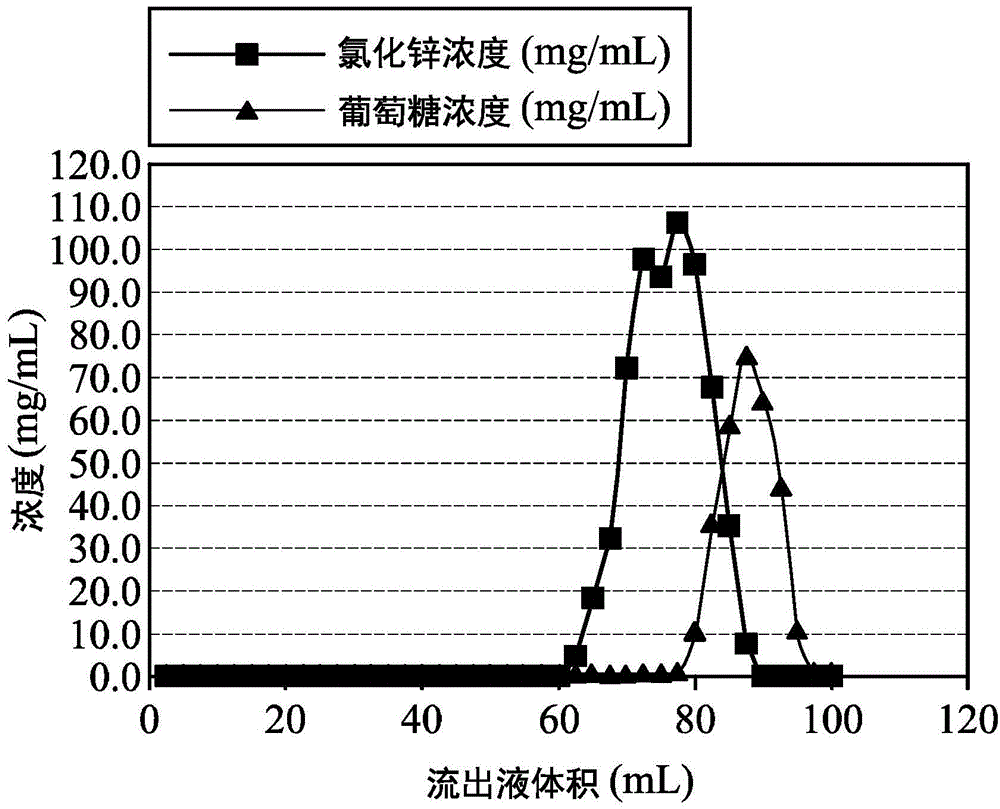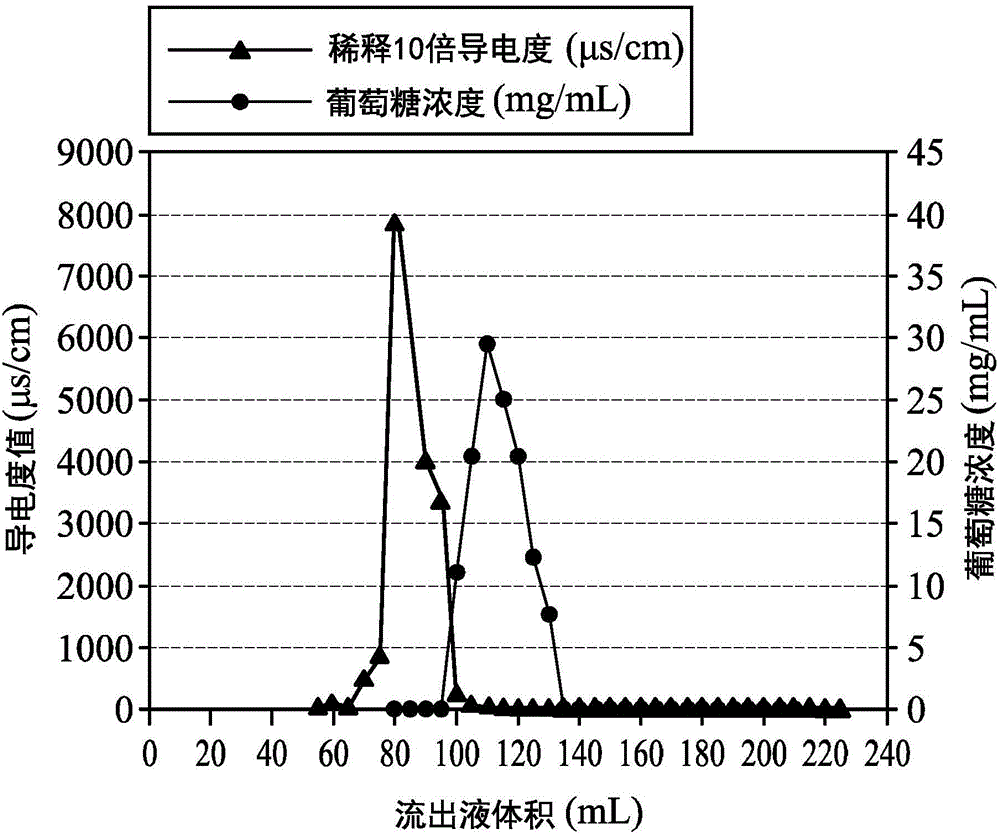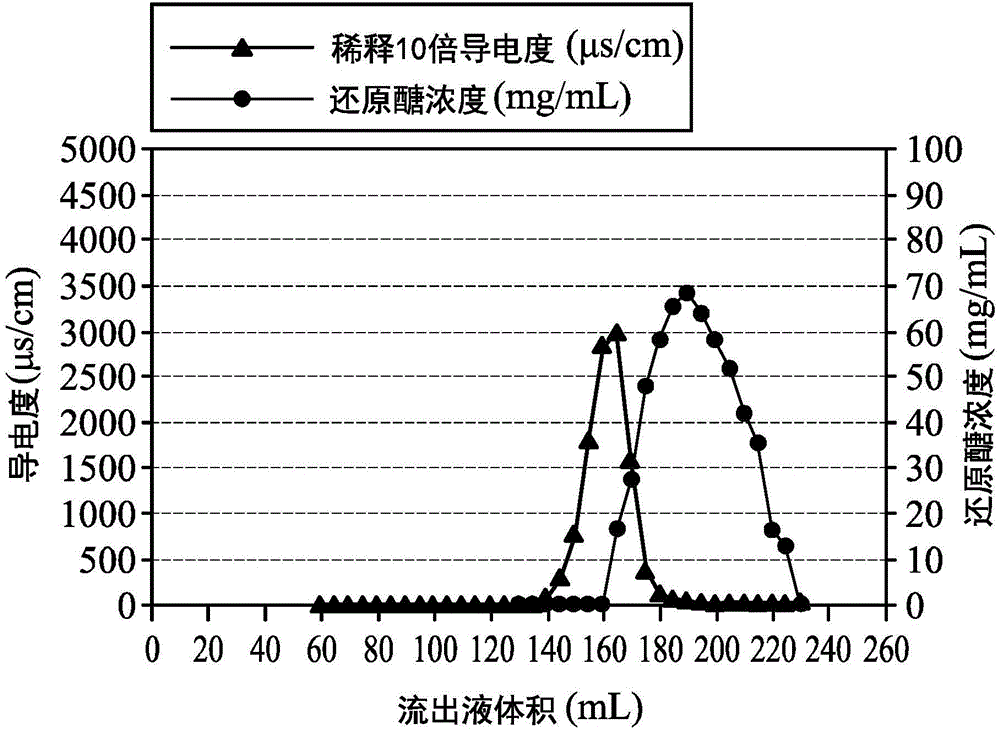Method Of Separating Carbohydrate
A separation method and sugar technology, applied in the field of sugar separation, can solve the problems of many by-products, slow speed, high acid consumption, etc., and achieve the effect of high sugar yield
- Summary
- Abstract
- Description
- Claims
- Application Information
AI Technical Summary
Problems solved by technology
Method used
Image
Examples
Embodiment 1-1
[0032] Mixed formic acid and zinc chloride (ZnCl 2 ) and then heated to form a mixed solution (formic acid 60wt%, zinc chloride 40wt%). Will Cellulose (Sigma, Avicel-pH-105-27NI) was added to the mixture and dissolved (temperature 50°C, time 20 minutes) to form a yellow homogeneous transparent liquid ( cellulose 15wt%), as shown in Table 1.
Embodiment 1-2
[0034] Mixed formic acid and zinc chloride (ZnCl) 2 ) and then heated to form a mixed solution (formic acid 60wt%, zinc chloride 40wt%). α-cellulose (Sigma, C8002) was added to the mixed solution and dissolved (temperature 50°C, time 20 minutes) to form an amber homogeneous transparent liquid (α-cellulose 15wt%), as shown in Table 1.
Embodiment 1-3
[0036] Mixed formic acid and calcium chloride (CaCl) 2 ) and then heated to form a mixed solution (formic acid 75wt%, calcium chloride 25wt%). Will Cellulose (Sigma, Avicel-pH-105-27NI) was added to the mixture and dissolved (temperature 65°C, time 90 minutes) to form a yellow homogeneous transparent liquid ( cellulose 6wt%), as shown in Table 1.
PUM
 Login to View More
Login to View More Abstract
Description
Claims
Application Information
 Login to View More
Login to View More - R&D
- Intellectual Property
- Life Sciences
- Materials
- Tech Scout
- Unparalleled Data Quality
- Higher Quality Content
- 60% Fewer Hallucinations
Browse by: Latest US Patents, China's latest patents, Technical Efficacy Thesaurus, Application Domain, Technology Topic, Popular Technical Reports.
© 2025 PatSnap. All rights reserved.Legal|Privacy policy|Modern Slavery Act Transparency Statement|Sitemap|About US| Contact US: help@patsnap.com



